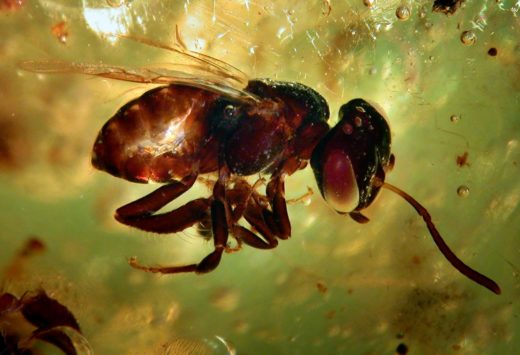The Honeybee Conjecture
Emily Raboteau

We felt the constant sting of cold yet none of us had ever walked barefoot in a clover meadow and been stung by a bee. So when Alya decided to build a museum using honeycomb as an architectural model, none of our hive understood what she was after, let alone what such a museum would exhibit. It seemed a waste of energy.
The bees knew something we didn’t, she told me, as she sketched the blueprints in a pattern of interlocking but imperfect hexagons. Even behind all this chaos, she said, stood an elegant reasoning. A complex harmonious design.
This was the kind of talk that first endeared me to Alya. There weren’t many inter-marriages between those on the spectrum like her and those off of it, like me. Supposedly they were better suited for the environmental changes, clearer sighted, less emotional and besieged by nostalgia for things like the taste of honey. But there was no denying my wife had a romantic streak. It troubled me to hear it now. I only wanted her to rest. To stop her work to have a drink of water and a little food. Her eyes were feverish, her forehead damp, and she needed to put a fresh pad between her legs to catch the blood-flow.
-You’re probably wondering, she asked, adjusting her air filtration mask, -why I’m not using one of the other two geometrical figures that can connect on a flat surface without leaving gaps for the wind?
-Alya, I said, looking for the water jug. -You need to eat.
I placed a bowl of seal-meat on the drafting table before her but couldn’t exactly blame her for ignoring it. We’d had a diet of little else for weeks. Lichen, larvae, seal and more blubbery seal.
-Structures of equilateral triangles or squares are less compact when you total the perimeter, she continued. She explained that the museum should be built in Harbor 6, so that when the ships came to deliver goods from the archipelagoes that had been once been mountain ranges, their crews could debark and visit.
-Visit what? I asked impatiently. There was nothing left to be exhibited. Nothing that hadn’t been lost, pillaged, plundered, recycled, repurposed, hoarded, bartered, or burned.
-Don’t be angry, she said. She touched her middle, as if it pained her.
-About what? I asked.
Her eyes gleamed.
-I have something special. I got it on the black market.
-Show me. I tried not to sound fearful but I already felt prickly in the armpits over the loss of whatever precious resource of ours she must have traded to get whatever she’d gotten.
From her pocket Alya pulled an object the size of a baby’s fist. She carefully unwrapped it from a square of silk. In her palm sat a small globe the color of honey, flecked with tiny air bubbles. She held it up to catch the bleak light.
-Do you know what this is? she asked, breathless.
Of course I knew. It was a hunk of amber. The sap of some petrified, charred, or underwater tree inside of which, no bigger than the baby we’d just lost (our sixth) was entrapped a perfectly preserved bee. She’d traded the last of our drinking water for an insect.
Before I threw the relic against the wall I leaned in close to have a better look. I observed the striped abdomen. The eyelash-like antenna. The fuzzy thorax from which extended the twin lace works of the bee’s wings. They appeared so charmingly flight-like and self-possessed, it was as if the bee, in its blindness to the forces approaching to end its flight, never foresaw the foolish life forms that, centuries on, would study its industry for a clue.
Emily Raboteau is the author of The Professor’s daughter, and Searching for Zion, winner of a 2014 American Book Award. She lives in New York City where she’s at work completing a novel about the intersecting lives and problems of the residents of an apartment building, from the perspective of the super.
*This piece was written during Raboteau’s residency at The Miami Rail Writer’s Hideaway at The Standard Hotel









